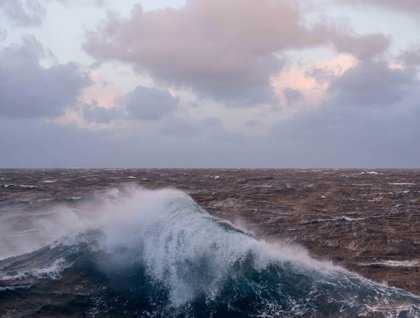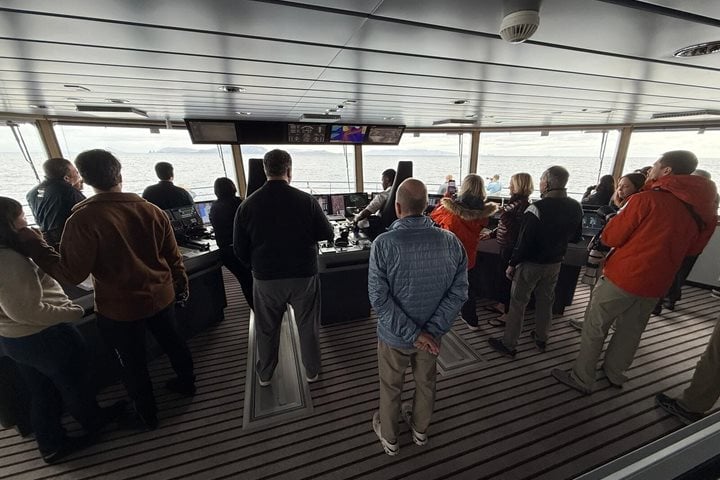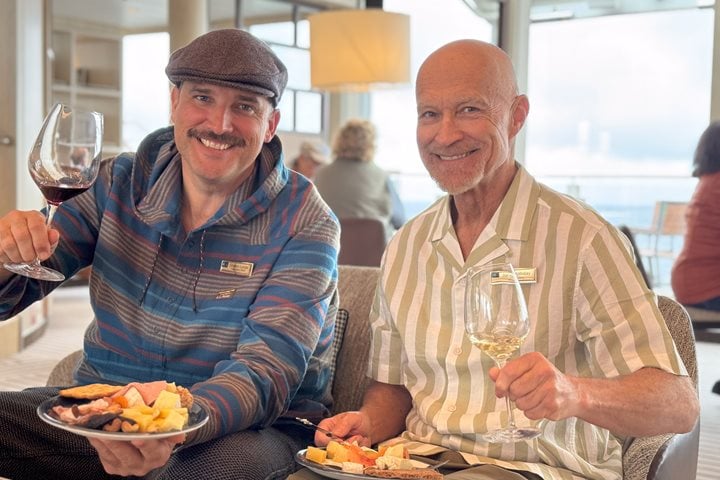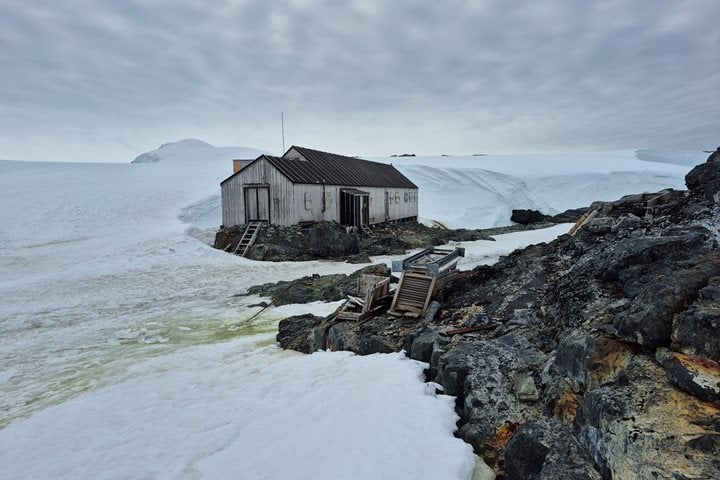The seas around Antarctica are notorious for their temper. After being favored by good weather throughout the trip, we finally got to experience a taste of what the Southern Ocean is best known for. Though in reality a truly rough crossing is not the norm, despite the Drake Passage’s fearsome reputation, it is certainly well capable of flexing its muscles on occasion. The morning provided us with strong winds and big seas, creating dramatic vistas bathed in sunlight, broken by dark, snow-bearing clouds. True seabirds, such as the albatrosses, shearwaters, and petrels, favor windy conditions such as these. Dynamic soaring allows them to harness the power of the wind in their almost effortless flight. Several wandering albatrosses, with their enormous wingspans, loitered around the ship for much of the morning, providing us with clear views of these magnificent beasts.
As we approached Cape Horn, the ship changed course, returning us to stability and granting a view of the famous albatross monument atop the cliff. The monument was raised in memory of those who were lost at sea while passing through these waters. This area is also rich in wildlife, with dolphins of various species and birds ranging from albatrosses to shags and Magellanic penguins.
We also had a couple of presentations today, alongside the natural spectacle provided for us. Naturalist Jimmy White presented a lecture on climate change. As well as discussing causes and potential solutions, Jimmy also analyzed the questions surrounding why this is an issue that we as a species are struggling to bring ourselves to address. Our second talk then was given by Global Perspectives guest speaker Peter Hillary, and was both a biography of and tribute to his father, Sir Edmund Hillary. By the end of the day we were well into the calm of the Beagle Channel, in time to come up alongside in Ushuaia during dinner. This allowed us to go ashore after eating to enjoy Ushuaia’s nightlife, before returning to the ship for one last night on board.









